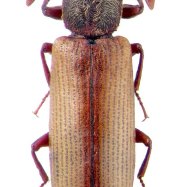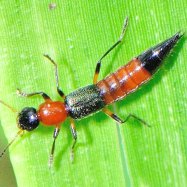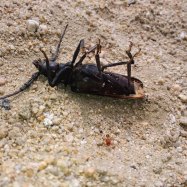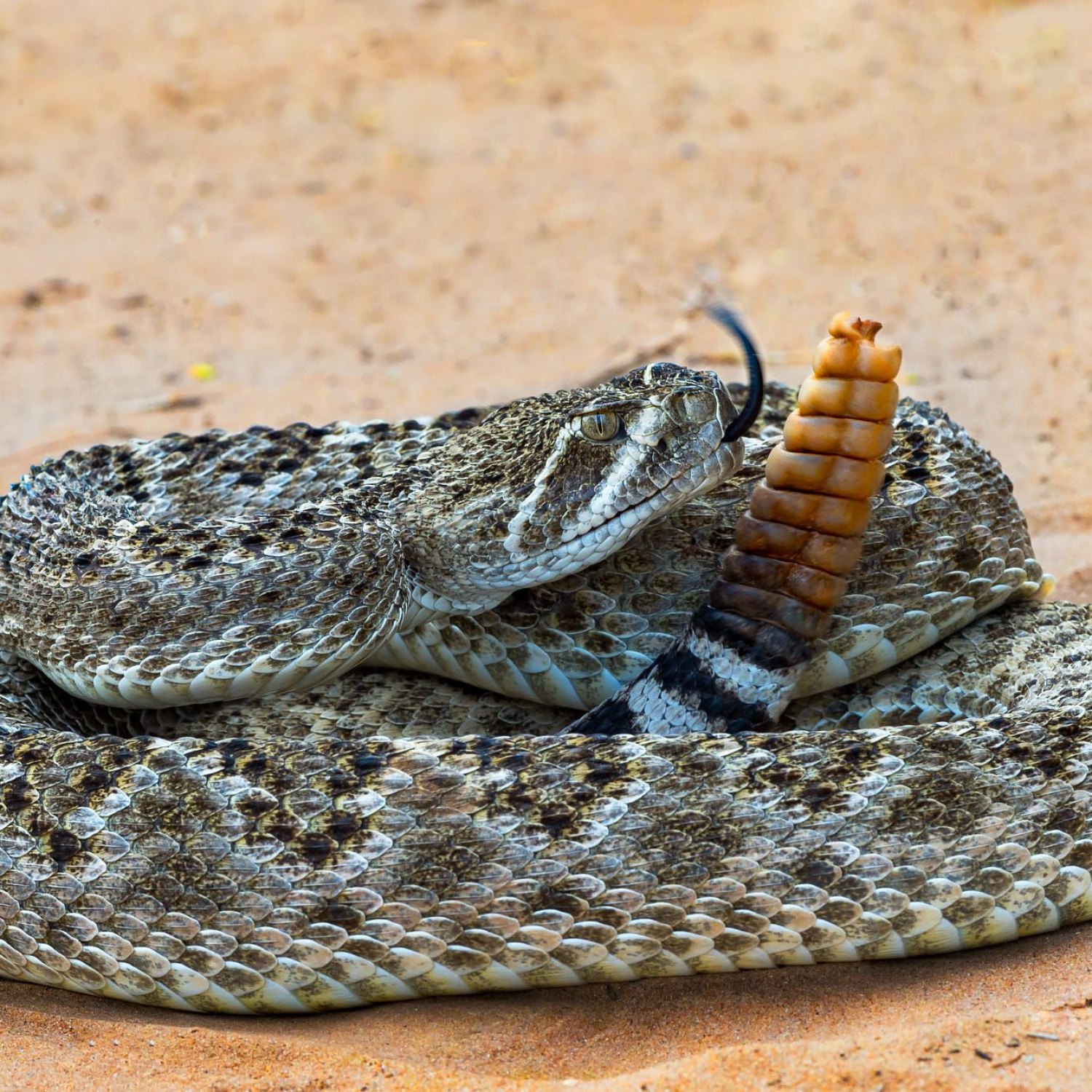
Western Diamondback Rattlesnake
3 to 5 feet (0.9 to 1.5 meters)
The Western Diamondback Rattlesnake is a heavy-bodied viper found in North America. Its length ranges from 3 to 5 feet, and it is known for its distinctive triangular-shaped head and rattling tail. Be cautious of this venomous reptile if you encounter it in the wild. #Rattlesnake #NorthAmerica #Viperidae
Animal Details Summary:
Common Name: Western Diamondback Rattlesnake
Kingdom: Animalia
Habitat: Deserts, grasslands, scrubland, rocky areas
The Deadly Beauty of the Western Diamondback Rattlesnake
When you think of the desert, what comes to mind? Perhaps vast stretches of sand, the scorching sun, or maybe even barren landscapes with little sign of life. But hidden amongst the seemingly lifeless terrain, lies one of the most fascinating creatures on earth - the Western Diamondback Rattlesnake.While many may feel a sense of fear or dread towards this reptile, there is no denying its mesmerizing nature. From its deadly venom to its unique adaptations, the Western Diamondback Rattlesnake is a creature worth learning about Western Diamondback Rattlesnake. So, let's take a closer look at this venomous serpent and discover what makes it truly remarkable.
The Basics
Before we dive into the specifics of the Western Diamondback Rattlesnake, let's take a quick look at its scientific classification. Its scientific name, Crotalus atrox, is derived from the Greek word krotalon, meaning "rattle," and Latin word atrox, meaning "fierce" or "cruel." This name perfectly sums up the essence of this animal – a deadly and intimidating serpent.The Western Diamondback Rattlesnake falls under the kingdom Animalia, the phylum Chordata, and the class Reptilia, making it a member of the animal kingdom and a vertebrate. It belongs to the order Squamata, which includes all snakes and lizards, and the family Viperidae, which includes all pit vipers. With its iconic rattle and venomous bite, this snake is undoubtedly a testament to its family.
Home on the Range
The Western Diamondback Rattlesnake is mostly found in the southwestern United States and northern Mexico. It is most commonly spotted in the states of Arizona, Texas, Oklahoma, and New Mexico Western Kingbird. These snakes prefer hot and dry habitats such as deserts, grasslands, scrublands, and rocky areas. They are also known to thrive in areas with vegetation as it provides them with hiding spots and possible prey.Interestingly, Western Diamondbacks are known to hibernate during the colder months of the year. They dig deep burrows or use abandoned animal dens to hibernate in large groups, sometimes even sharing their den with other snake species. This hibernation period can last up to six months, depending on the climate and location.
A Carnivore's Diet
As with most snakes, the Western Diamondback Rattlesnake is a carnivore, meaning it feeds primarily on other animals. It has no ability to chew or tear its food, so it relies on its powerful jaws and sharp teeth to immobilize its prey. These snakes have heat-sensing pits between their eyes and nostrils, which allows them to locate warm-blooded animals even in the dark.Their diet consists mainly of small mammals, such as rodents, rabbits, and ground squirrels. They are also known to feed on birds, lizards, and even other snakes. Once they strike their prey, they use their powerful muscles to squeeze and constrict them, leaving them helpless. Then, their venom comes into play, quickly paralyzing and killing their victim.
The Beauty of the Western Diamondback
Despite its formidable reputation, there's no denying the beauty of the Western Diamondback Rattlesnake. It is a heavy-bodied snake, with a triangular-shaped head and a sleek, muscular body, making it an impressive predator. Its coloring varies from shades of brown or grayish-brown, with distinctive diamond-shaped patterns along its back. These patterns are characteristic of all rattlesnakes, but the Western Diamondback's are especially striking.These snakes shed their skin regularly, which helps to maintain their vibrant scales and allows them to grow. Young Western Diamondbacks tend to have brighter colors and patterns compared to older adults. As they age, their coloring may become more faded, but their patterns remain unique and mesmerizing.
A Common Danger
With its potent venom and intimidating appearance, it's no surprise that the Western Diamondback Rattlesnake is seen as a dangerous creature. It is responsible for the majority of snakebite fatalities in the United States. However, snakebites often occur when humans disturb or accidentally step on the snake, making the snake feel threatened and triggered to attack.The venom of the Western Diamondback Rattlesnake is a potent neurotoxin, which means it affects the nervous system of its prey. It causes paralysis, respiratory failure, and death in its victims. However, if treated promptly, fatalities are rare, and most healthy adults can survive a bite with no long-term effects.
The Art of Survival
As with any animal, the Western Diamondback Rattlesnake has unique adaptations that help it survive in its harsh environment. One of these is its rattle, which is a series of hollow, interlocking segments located at the tip of its tail. When the snake shakes its tail, the segments rattle against each other, creating a distinct buzzing sound that serves as a warning signal to potential predators.Another fascinating adaptation is its heat-sensing pits located between their eyes and nostrils. These pits allow the snake to detect and locate its prey, even in the dark. The Western Diamondback can also sense changes in temperature, helping them regulate their body temperature in extreme weather conditions.
Their unique diamond-shaped patterns also serve as a form of camouflage, blending in with the sandy and rocky terrains of their habitat. This helps them remain undetected by both prey and predators, making them efficient hunters.
A Species Worth Protecting
Despite the Western Diamondback Rattlesnake's dangerous reputation, these snakes have an essential role in their ecosystems. As predators, they help control the population of small mammals, which helps maintain the balance of their habitats. However, due to habitat destruction, illegal collection for the exotic pet trade, and persecution by humans, these snakes are facing threats to their survival.Fortunately, laws and regulations are in place to protect this species, and conservation efforts are being made to protect their natural habitats. Education and awareness are also essential in promoting their protection and preserving their populations.
A Final Note
In conclusion, the Western Diamondback Rattlesnake is a fascinating and beautiful creature, with unique adaptations and a vital role in its ecosystem. While it may inspire fear in some, there is no denying the importance of preserving this species and respecting its habitat. So, the next time you're out in the desert, keep an eye out for this deadly beauty, but remember to admire from a safe distance.

Western Diamondback Rattlesnake
Animal Details Western Diamondback Rattlesnake - Scientific Name: Crotalus atrox
- Category: Animals W
- Scientific Name: Crotalus atrox
- Common Name: Western Diamondback Rattlesnake
- Kingdom: Animalia
- Phylum: Chordata
- Class: Reptilia
- Order: Squamata
- Family: Viperidae
- Habitat: Deserts, grasslands, scrubland, rocky areas
- Feeding Method: Carnivorous
- Geographical Distribution: Southwestern United States and northern Mexico
- Country of Origin: United States, Mexico
- Location: North America
- Animal Coloration: Brown or grayish-brown with diamond-shaped patterns along its back
- Body Shape: Heavy-bodied snake with a triangular-shaped head
- Length: 3 to 5 feet (0.9 to 1.5 meters)
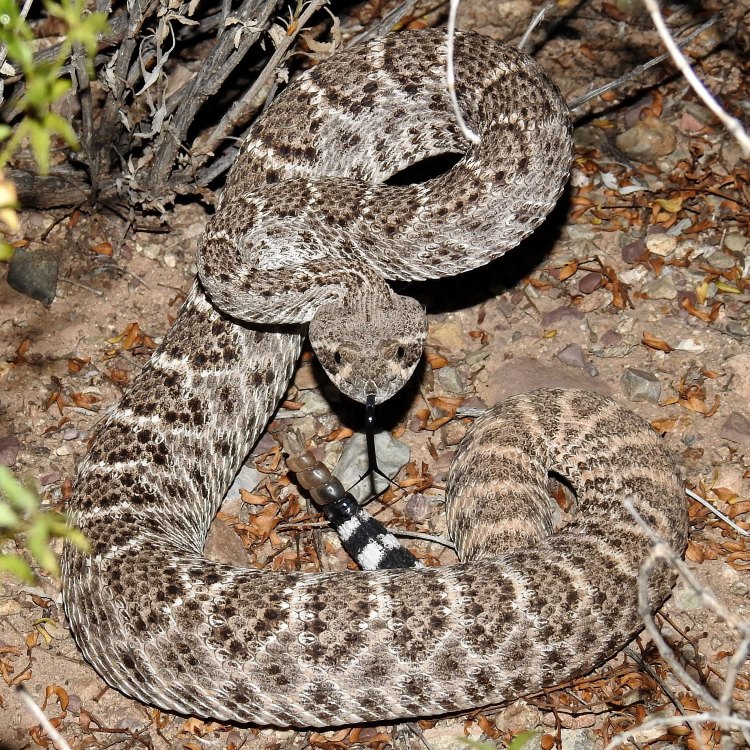
Western Diamondback Rattlesnake
- Adult Size: Up to 7 feet (2.1 meters)
- Average Lifespan: 10 to 20 years
- Reproduction: Sexual
- Reproductive Behavior: Mating season occurs in spring and early summer
- Sound or Call: Rattles its tail to produce a buzzing sound as a warning
- Migration Pattern: No regular migration pattern, but may move to seek better food and water sources
- Social Groups: Solitary, but may gather in groups during hibernation or mating season
- Behavior: Mostly nocturnal and ambush predators
- Threats: Habitat loss, road mortality, and intentional killing by humans
- Conservation Status: Least Concern
- Impact on Ecosystem: Apex predators that help regulate prey populations
- Human Use: Venom extraction for antivenom production, species of interest for snake enthusiasts
- Distinctive Features: Rattle at the end of the tail
- Interesting Facts: The Western Diamondback Rattlesnake is responsible for the majority of snakebite fatalities in the United States
- Predator: Coyotes, birds of prey, larger snakes
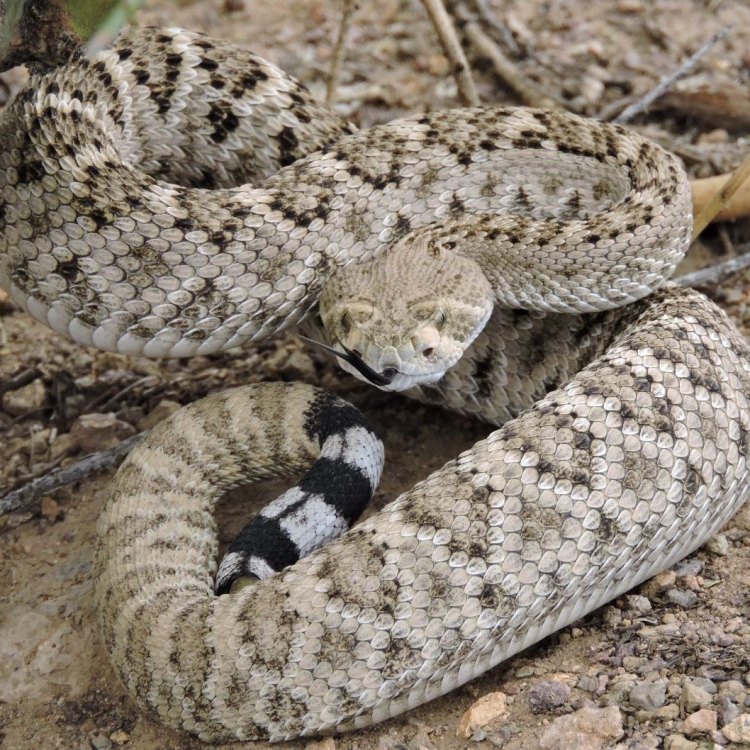
Crotalus atrox
The Mighty Western Diamondback Rattlesnake: A Fascinating Apex Predator
The Western Diamondback Rattlesnake, scientifically known as Crotalus atrox, is a species of venomous pitviper found in the southwestern United States and Mexico. Known for its iconic rattle at the end of its tail, this impressive serpent has captured the fascination of many with its distinctive features and important role in its ecosystem. In this article, we will dive into the world of the Western Diamondback Rattlesnake, exploring its unique characteristics, behaviors, and its impact on both humans and the environment.Size and Lifespan
The Western Diamondback Rattlesnake is one of the largest rattlesnake species, reaching an impressive length of up to 7 feet (2 PeaceOfAnimals.Com.1 meters). However, on average, they measure around 4 to 5 feet in length. As with most snake species, females are usually larger than males.
In terms of lifespan, these serpents can live anywhere from 10 to 20 years in the wild. However, in captivity, with proper care, they can live even longer. Like most reptiles, the lifespan of the Western Diamondback Rattlesnake is influenced by factors such as food availability, habitat, and predator avoidance.
Reproduction and Behavior
The Western Diamondback Rattlesnake is a sexual species, with males and females mating during the spring and early summer. Interestingly, males engage in a ritual known as "combat dance" to compete for the attention of females. This involves the two males wrestling, coiling around each other, and pushing with their bodies Woodlouse. The winner then gets to mate with the female.
After mating, the females will carry their developing eggs inside their body for about four months before giving birth to live young. They are ovoviviparous, meaning the eggs hatch inside the mother's body, and she gives birth to fully formed baby rattlesnakes.
The Western Diamondback Rattlesnake is mostly a solitary species, except during the mating season, where multiple males may compete for a female's attention. They are mostly nocturnal, hunting at night and resting in the shade during the day. They are also ambush predators, relying on their excellent camouflage and ambush techniques to catch their prey, which includes small mammals, lizards, birds, and other reptiles.
Distinctive Features
The most distinctive feature of the Western Diamondback Rattlesnake is, of course, its rattle. This rattling sound is produced when the snake vibrates its tail, made up of a series of hollow interlocking segments, against each other. This produces the buzzing sound that gives the warning signal to potential predators.
The rattle is used not only as a warning but also to scare off potential threats. When threatened, the snake may shake its rattle, deterring predators from coming any closer. It is also a useful tool to attract prey, as the movement and sound of the rattle can mimic the vibrations of a small rodent, luring in unsuspecting prey.
Impact on the Ecosystem
As an apex predator, the Western Diamondback Rattlesnake plays an essential role in its ecosystem. As they are top predators, they help regulate the population of their prey species. Without their presence, the prey populations may grow uncontrollably, leading to detrimental effects on other plants and animals in the ecosystem.
In addition, as ambush predators, rattlesnakes are also known to take down larger prey, such as rabbits, which may have a significant impact on the prey population. Somewhat counterintuitively, their presence can also benefit smaller animals, as they also help keep the population of smaller predators, such as rats and mice, in check.
Threats and Conservation Status
Despite their important role in the ecosystem, Western Diamondback Rattlesnakes face several threats that are putting their population at risk. Habitat loss due to human development is a significant threat, as these snakes require large swathes of land to roam and hunt.
Road mortality is also a concern, as these snakes are often run over by vehicles while basking on hot roads. Sadly, intentional killing by humans also poses a significant threat to their survival. Although Western Diamondback Rattlesnakes are typically shy and will try to avoid humans, they are often killed out of fear or for their venom.
Fortunately, the Western Diamondback Rattlesnake is currently listed as "Least Concern" on the International Union for Conservation of Nature (IUCN) Red List. However, it is still essential to raise awareness about their important role in the ecosystem and the need to protect their habitat.
Human Use and Interesting Facts
The Western Diamondback Rattlesnake has a long history of use by humans, particularly in the production of antivenom. Venom extraction is done by experienced handlers in a controlled environment, and the collected venom is used to develop antivenom that can potentially save lives.
Their unique appearance and behavior also make them a popular species for snake enthusiasts and hobbyists. Many people find fascination in watching these snakes in controlled environments, such as zoos and reptile parks.
However, despite their usefulness and popularity, Western Diamondback Rattlesnakes are responsible for the majority of snakebite fatalities in the United States. Their venom is highly toxic and can cause severe symptoms, including tissue damage, organ failure, and, in some cases, death. It is important to remember that these snakes are not to be underestimated and should be admired from a safe distance.
Natural Predators
Despite their venomous capabilities, the Western Diamondback Rattlesnake has a few natural predators. Larger snakes, such as king snakes, can potentially overpower and kill a rattlesnake. Raccoons and opossums have also been known to eat young rattlesnakes. However, the biggest threat to rattlesnakes is encounters with humans.
In conclusion, the Western Diamondback Rattlesnake is a fascinating creature that plays an essential role in its ecosystem. Their unique features, reproductive behaviors, and impact on the environment make them a truly remarkable apex predator. Despite facing threats from habitat loss and human activity, it is our responsibility to protect these snakes and appreciate their importance in maintaining a healthy balance in our ecosystem.
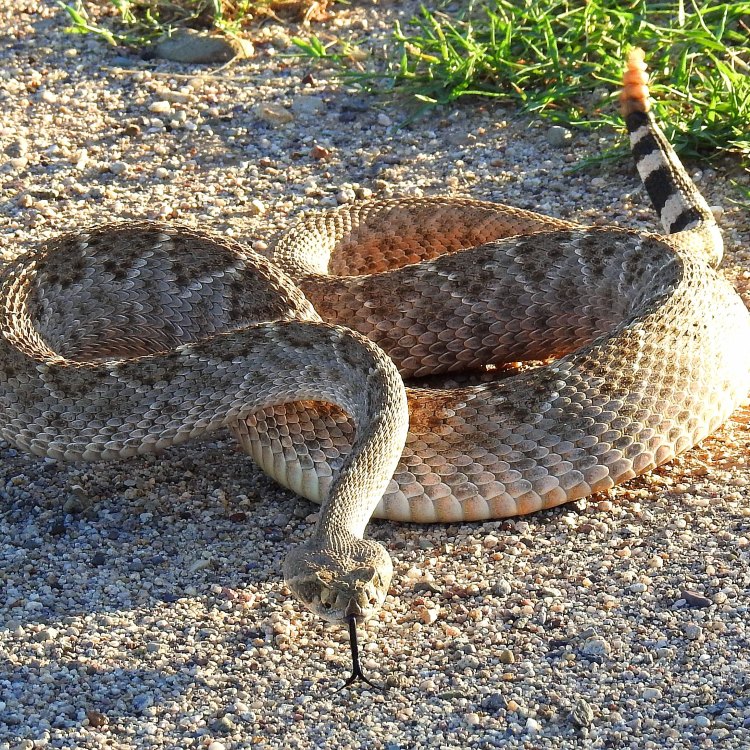
The Deadly Beauty of the Western Diamondback Rattlesnake
Disclaimer: The content provided is for informational purposes only. We cannot guarantee the accuracy of the information on this page 100%. All information provided here may change without prior notice.



